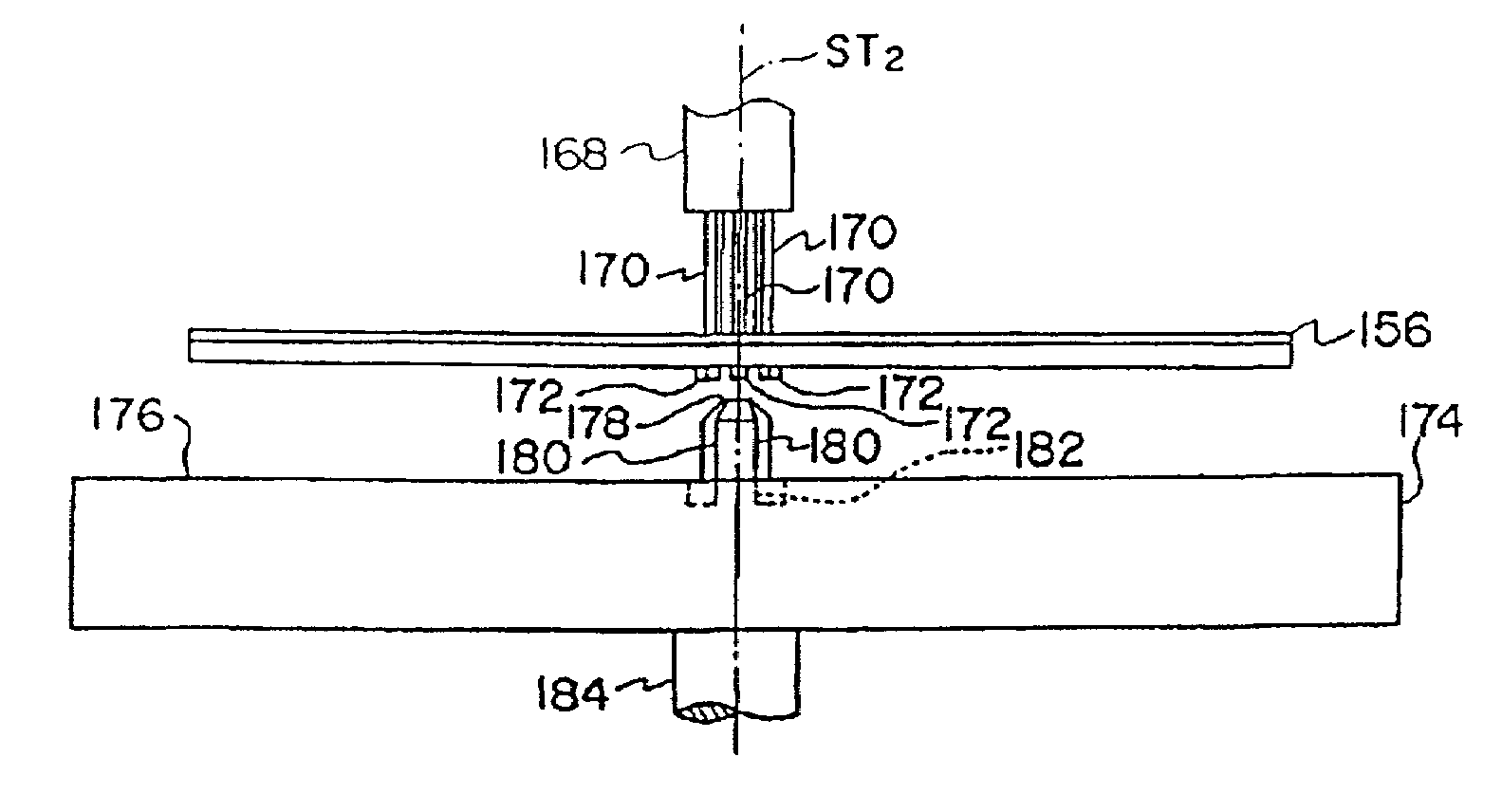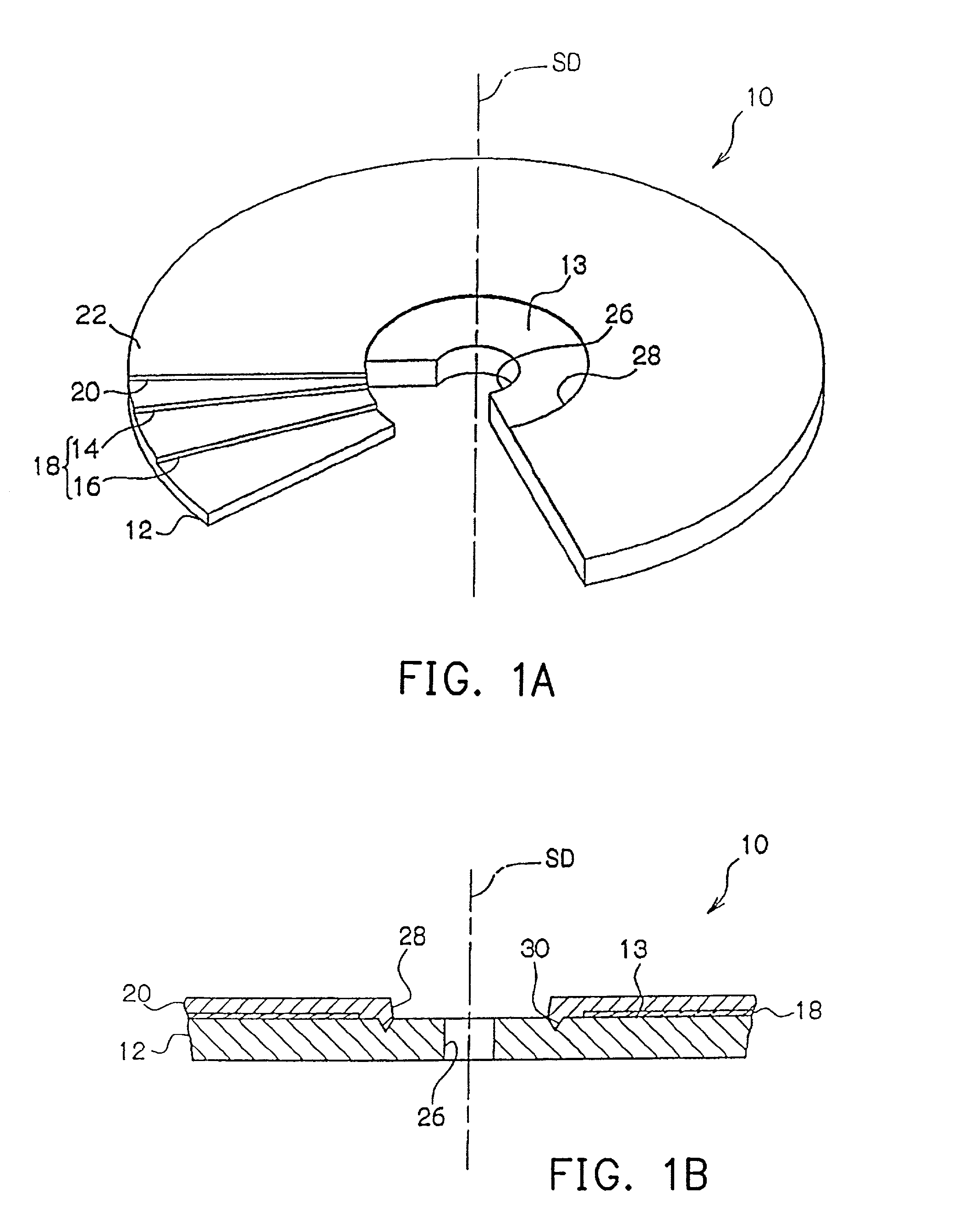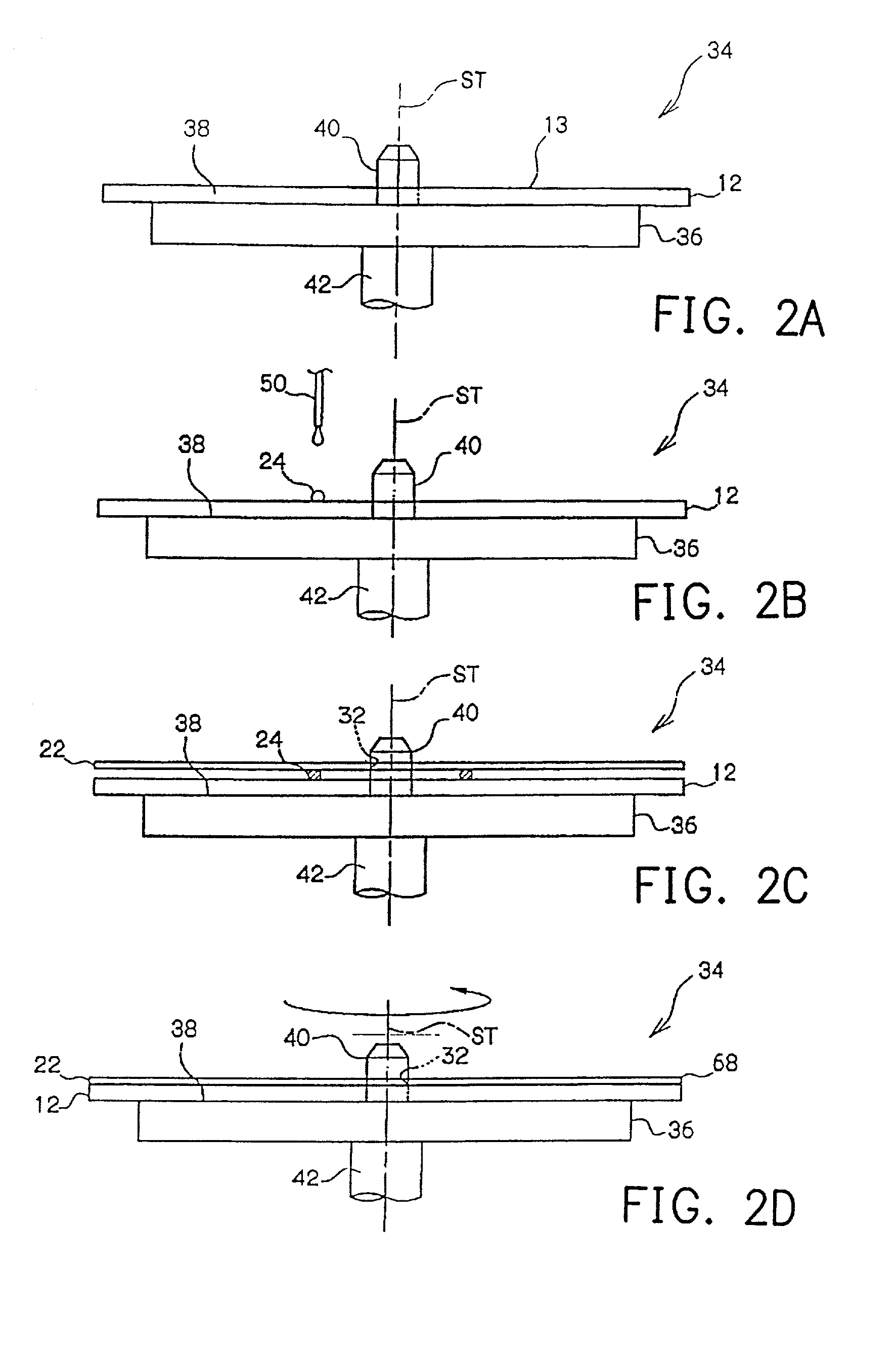Method for manufacturing optical disc and method for transporting multi-layered optical disc
- Summary
- Abstract
- Description
- Claims
- Application Information
AI Technical Summary
Benefits of technology
Problems solved by technology
Method used
Image
Examples
example 1
[0082]In the example 1, the disc substrate of the optical disc is formed by molding using a material of polycarbonate (PC), with a thickness of 1.2 mm, an outer radius of 120 mm. A guiding groove with a groove depth of 175 nm, a groove width of 500 nm and a track pitch of 1600 nm is formed on the recording surface of the disc substrate. In addition, a silver film with a thickness of 80 nm is used as a light reflection layer and is formed on the recording surface by a magnetron sputter. Furthermore, a thin film made of PET with a thickness of 62 μm is used as the sheet and is made to have the same surface shape as the disc substrate. In the example 1, on the disc substrate, a ring groove is formed on the inner side of the recording layer at the recording surface (inner ring groove). The inner ring groove is equivalent to the groove 30 of the optical disc 10 shown in FIGS. 1˜5.
[0083]The above disc substrate is loaded onto the turntable of the spin coater. The turntable rotates at a lo...
PUM
| Property | Measurement | Unit |
|---|---|---|
| Thickness | aaaaa | aaaaa |
| Circumference | aaaaa | aaaaa |
Abstract
Description
Claims
Application Information
 Login to View More
Login to View More - R&D
- Intellectual Property
- Life Sciences
- Materials
- Tech Scout
- Unparalleled Data Quality
- Higher Quality Content
- 60% Fewer Hallucinations
Browse by: Latest US Patents, China's latest patents, Technical Efficacy Thesaurus, Application Domain, Technology Topic, Popular Technical Reports.
© 2025 PatSnap. All rights reserved.Legal|Privacy policy|Modern Slavery Act Transparency Statement|Sitemap|About US| Contact US: help@patsnap.com



